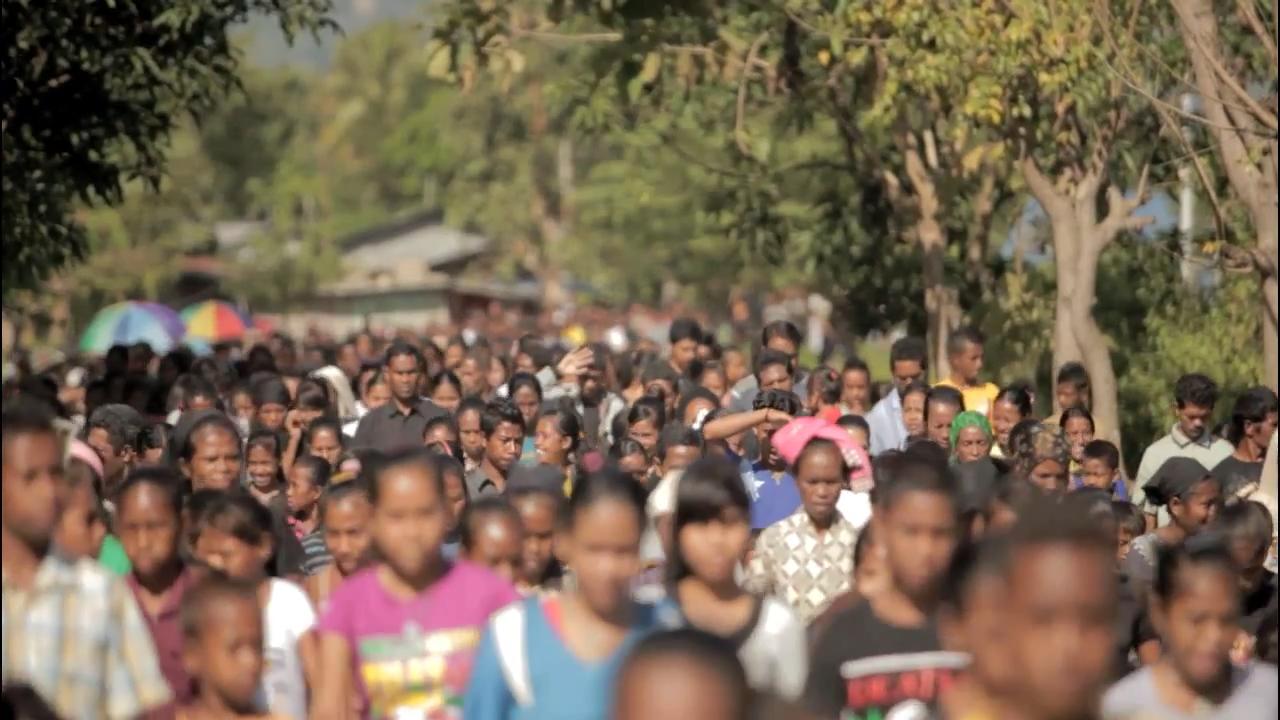
All of them, from the elderly people sitting under makeshift shades to the market sellers and billiards players, feel so authentic that we can read the history of the region on their darkened, hardened faces. It shows not on the sense that they are amateurs who act unconvincingly or have no screen presence, quite the opposite. Like noted earlier, “Atambua 39° Celsius” is shot on location in the settlement, with local residents as actors and it is obvious. Instead, Riza uses the political and cultural history to give contextual meaning to the stories of the people within. Never to the point of feeling preachy or forgetting its main focus, that on the people that inhabit the place and their personal stories. Yet, all of this is shown in a very subtle and restrained manner. Though dealing with death and shown only in passing, both scenes speak volumes of the personal and societal repercussions of the referendum. The first is when Nikia tells that no-one nowadays remembers the black mourning cloth used by the people on the island, while the second, a group of people trying to carry the remnants of a member of their community over the border. This is nowhere better seen than in two short scenes. Even more, their future will always be defined by the referendum from 1999 and their decision to stay in either country. Rather, he shows how political decisions, even ones from the past, have large consequences for individuals, families, and entire communities, as the ones on the divided island of Timor.Īs subtly shown thorough “Atambua 39° Celsius”, the consequences of this political decision are felt even now and have created people who live between two countries and cultures, between past and present. Inspired by stories heard by him while in Atambua, Riri Riza ( “Eliana, Eliana”) creates a slow and languid film that is political yet never feeling overly so to the point of forgetting the human aspect of it. Just then, Ronalno hears his wife’s voice for the first time in ten years and realizes the results of his life in denial.
#Film atambua 39 derajat celcius how to
Smitten with her but not knowing how to show it and having had enough of his father’s stubbornly self-defeating behavior, Joao tries to find Nikia in Kupang. One day, Nikia (Putri Moruk) comes back to Atambua from Kupang to perform the mourning rituals for her deceased grandfather. Now, Ronaldo works as an inter-city bus driver, spending most of his working hours and money on alcohol and gambling, whereas Joao spends his days hanging out with friends, cleaning his father’s puke, and listening to his mother’s cassette tape “letters.” Like the majority of its residents, they are just two of the 250 000 people who left their native lands following the 1999 referendum, while the rest of their family chose to stay in the newly created East Timor.

Joao Bautista (Gudino Soares) lives with his estranged pro-Indonesia father Ronaldo (Petrus Beyleto) in the city of Atambua.

It has since been shown at numerous festivals around the world and garnered many awards.Ītambua 39° Celsius is Screening at Locarno Film Festival


#Film atambua 39 derajat celcius movie
Partially crowd-funded and using mainly Tetum, the language of the people from Timor Island, the movie premiered at the 25th Tokyo International Film Festival. Shot on location in the eponymous border town between Indonesia and East Timor, Riri Riza’s “Atambua 39° Celsius” deals with the consequences of the 1999 referendum which split the hitherto Indonesia-occupied island into two.


 0 kommentar(er)
0 kommentar(er)
